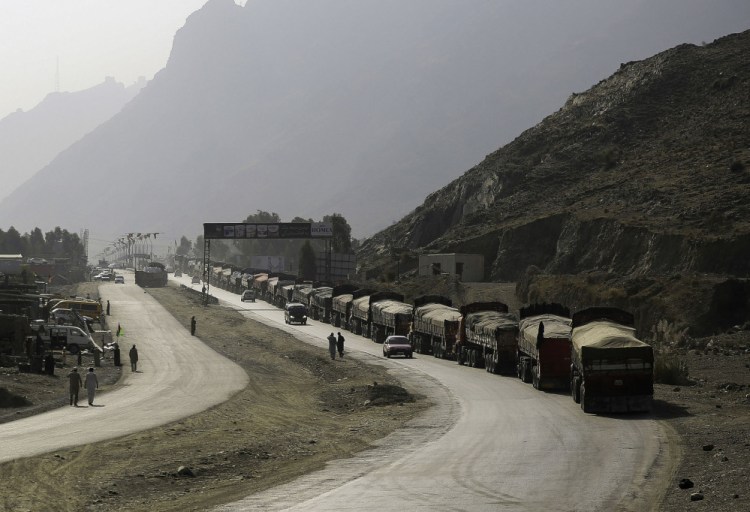On the upper deck of the Hamza Fort border checkpoint in Pakistan’s South Waziristan, Maj. Gen. Nauman Zakaria points to a 12-foot-high fence just yards away– the latest initiative the military says will stem insurgent attacks across a more than 1,000-mile disputed border with Afghanistan.
“There won’t be an inch of international border that shall not remain under our observation,” said Zakaria, who has served in counter-insurgency operations in restive border regions of south and north Waziristan.
At an estimated cost of more than $532 million, Pakistan has started fencing the 1,456-mile border with war-torn Afghanistan, the latest measure that’s driving a wedge between the fractious neighbors who have accused each other of harboring insurgents launching cross-border attacks.
Afghan President Ashraf Ghani has condemned Pakistan for instigating an “undeclared war of aggression” against his nation. Ghani’s administration has repeatedly denounced and threatened armed confrontation over the fence construction across the disputed Durand Line, which divided the largely ethnic Pashtun communities in the region during British colonial rule.
U.S. PRESSURE TO ACT
Despite the objections, Pakistan is proceeding with its plan as Islamabad faces increased U.S. pressure to act against terrorists. President Trump in August strongly denounced the nation’s alleged duplicity. He said the nuclear-armed Islamic Republic continues to harbor militant groups, such as the Taliban-affiliated Haqqani Network, which have attacked American-backed forces in Afghanistan.
After visiting Islamabad during a tour of South Asia last month, Secretary of State Rex Tillerson said he was concerned that terror groups are undermining political stability in Pakistan and called on leaders there to join in eradicating fighters that seek safe haven within its borders.
Pakistan’s military expects to complete construction of the chain-linked and barbed-wire topped fence across the South Waziristan portion by December 2018. No timeline has been given for completion of the entire length of the border and there are questions over whether the plan is logistically feasible along the porous and often mountainous terrain.
There are 235 crossing points, some frequently used by militants and drug traffickers, of which 18 can be accessed by vehicles, according to a report by the Afghanistan Analysts Network research group last month.
The Taliban are used to moving with ease between the two countries in the often lawless border lands and are usually waved through by Pakistan security forces, according to the AAN, citing conversations with multiple current and former Taliban fighters, doctors and Afghans living in the region. Pakistan’s military has long denied supporting militant groups, including the Taliban.
‘A FREE HIGHWAY’
While there has been some tightening of security since, the AAN said more than 2,000 Taliban commanders traveled to the southwestern Pakistani city of Quetta in July 2015 to witness Mullah Akhtar Mansour’s ascension to the group’s leadership, before his death last year when he was killed in Pakistan by a U.S. drone strike.
“It was like a free highway,” Asad Munir, a retired brigadier who served in Waziristan and other border regions, said about one of the crossing points in Birmal. Militants won’t sit idle and will find alternative routes to sneak across the fenced border, he said.
The barrier is also aimed at reducing the drug trade across the border, which fund the Taliban’s operations in Afghanistan. About 40 percent of the opiates produced in the war-torn country are used in and transit through Pakistan.
Send questions/comments to the editors.



Success. Please wait for the page to reload. If the page does not reload within 5 seconds, please refresh the page.
Enter your email and password to access comments.
Hi, to comment on stories you must . This profile is in addition to your subscription and website login.
Already have a commenting profile? .
Invalid username/password.
Please check your email to confirm and complete your registration.
Only subscribers are eligible to post comments. Please subscribe or login first for digital access. Here’s why.
Use the form below to reset your password. When you've submitted your account email, we will send an email with a reset code.